Westin Excelsior
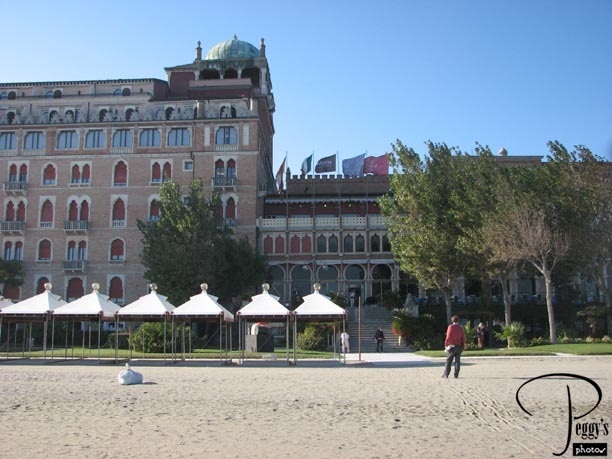
Day 12. Keith left Venice today to go back to California. I was to leave tomorrow (I thought, but see the end of this album). Originally, before hurting my foot, I was going to just walk slowly around Venice Island and take loads of photos. However, I didn’t want to chance falling down on one of Venice’s many bridges, etc., so I made new plans. First, I walked around the Westin Excelsior, our hotel. View from the Adriatic side of the hotel.

Westin Excelsior
Map of Our Tour

There are hutongs all over Beijing––hutongs are alleyways or narrow streets lined with shops and courtyard houses. They represent old Beijing. Many have been demolished in the name of progress but now they are being preserved. We visited the hutongs northwest of the Forbidden City. Some things are circled on the map that we didn’t visit––they are my original markings of places I had thought I would have liked to visit.

Map of Our Tour
Westin Excelsior
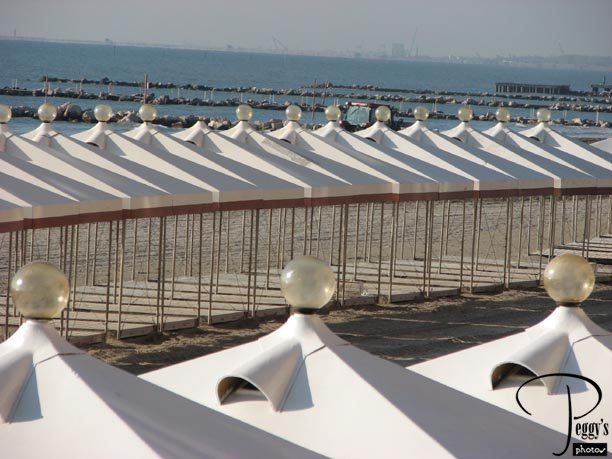
The cabanas on the beach. I had a view later of almost the entire Adriatic side of the Lido. The row of cabanas was from one end of it to the other end––quite a distance.

Westin Excelsior
Westin Excelsior
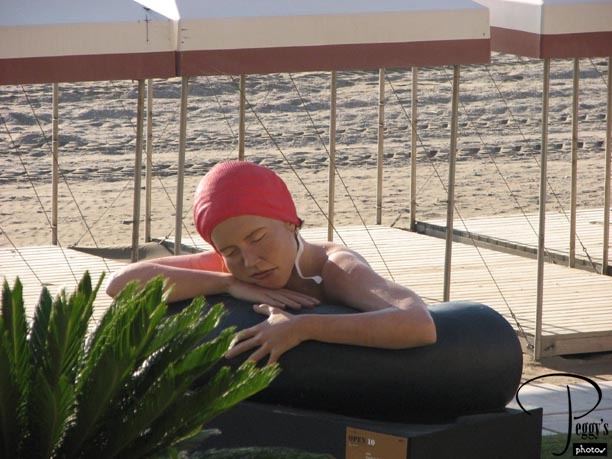
A very interesting sculpture on the beach. The girl looks American probably because the sculpturess is American. It is called “The Survival of Serena, 2007,” by Carole A. Feuerman.

Westin Excelsior
Westin Excelsior
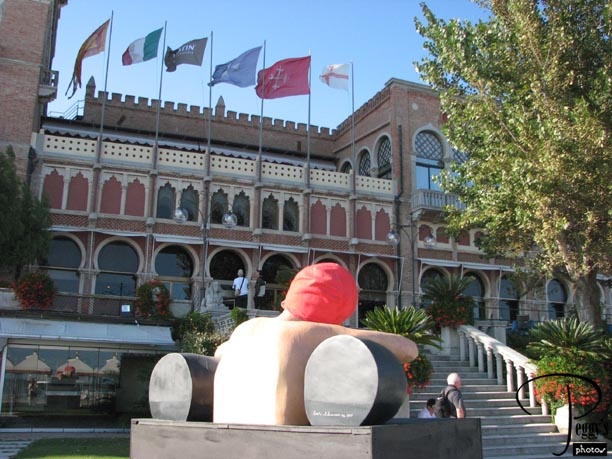
Rear view of “Serena.”

Westin Excelsior
Westin Excelsior
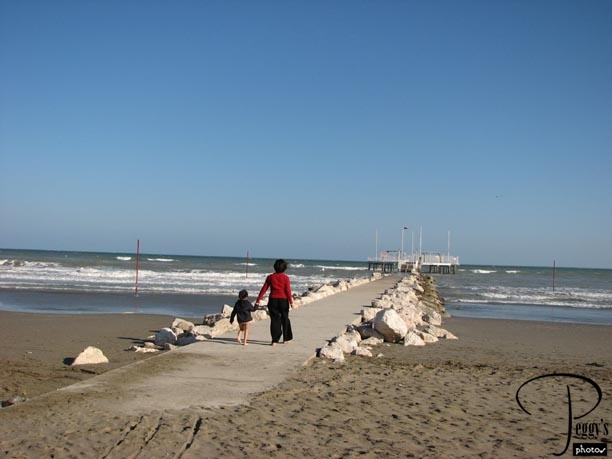
The dock out to the Adriatic Sea.

Westin Excelsior
Westin Excelsior
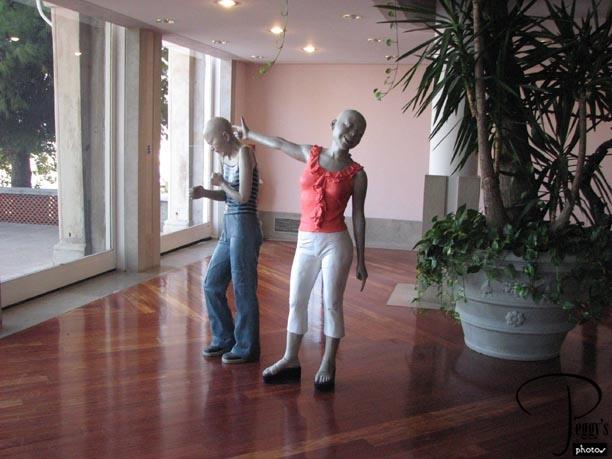
Another sculpture in the hotel’s lobby.

Westin Excelsior
Westin Excelsior
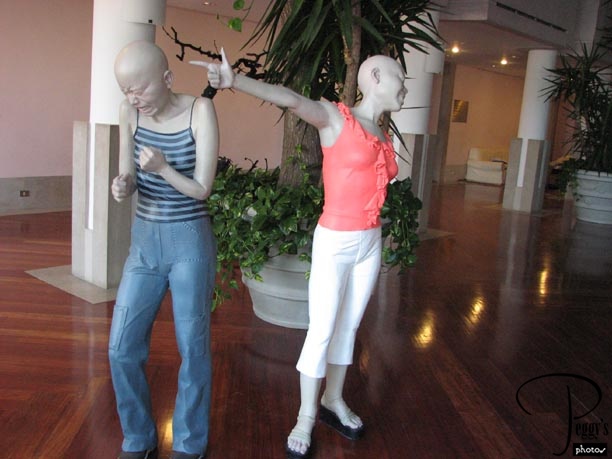
View of the sculpture from a different angle.

Westin Excelsior
Westin Excelsior
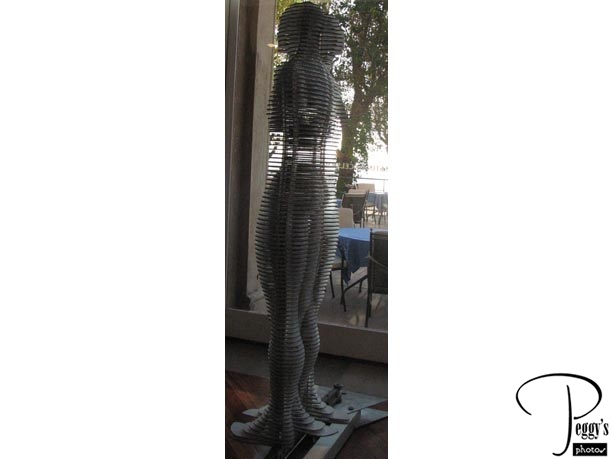
Another sculpture in the hotel’s lobby.

Westin Excelsior
Westin Excelsior
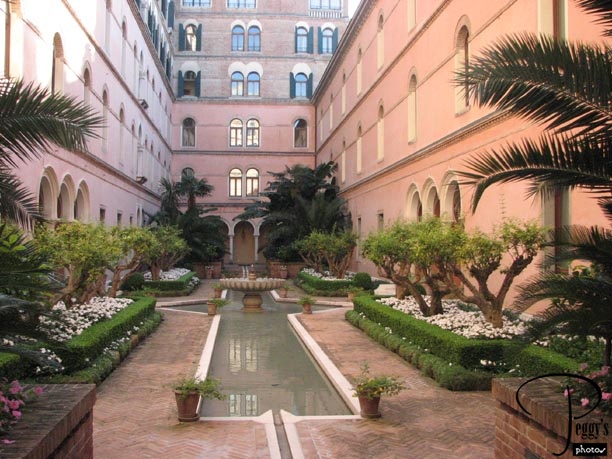
Inside courtyard.

Westin Excelsior
Westin Excelsior
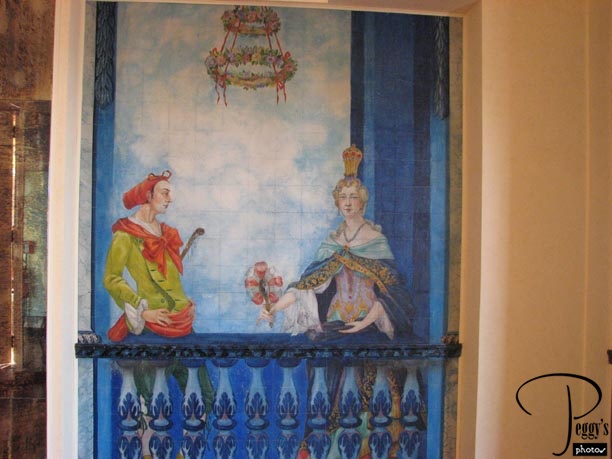
Tile on a wall.

Westin Excelsior
Westin Excelsior
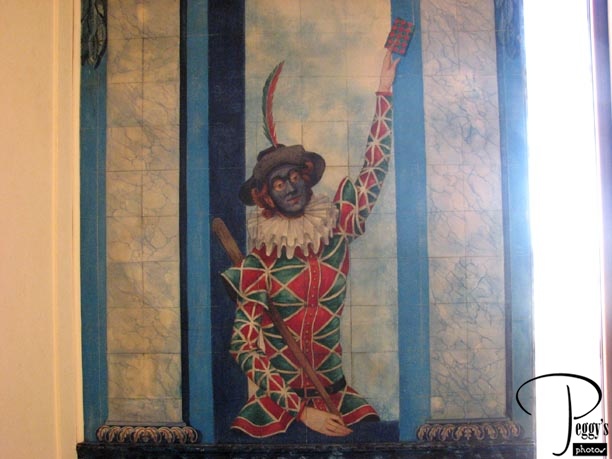
Another wall tile.

Westin Excelsior
Westin Excelsior
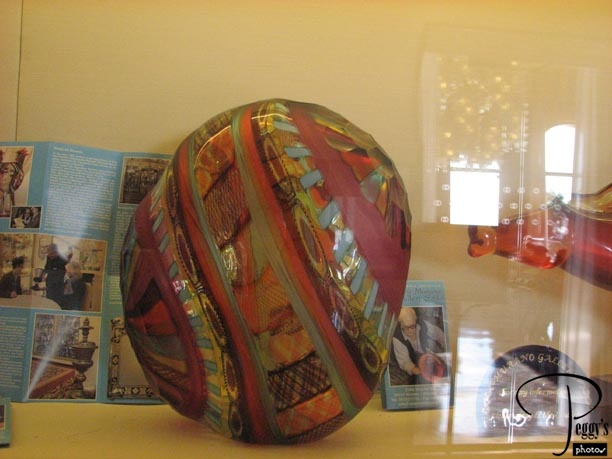
Murano glass display.

Westin Excelsior
Westin Excelsior
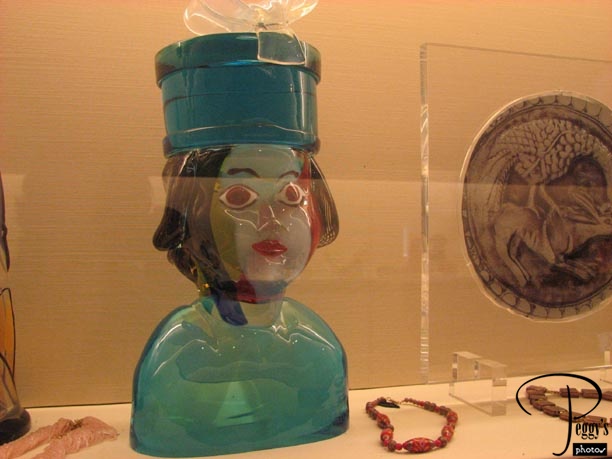
More Murano glass.

Westin Excelsior
Westin Excelsior
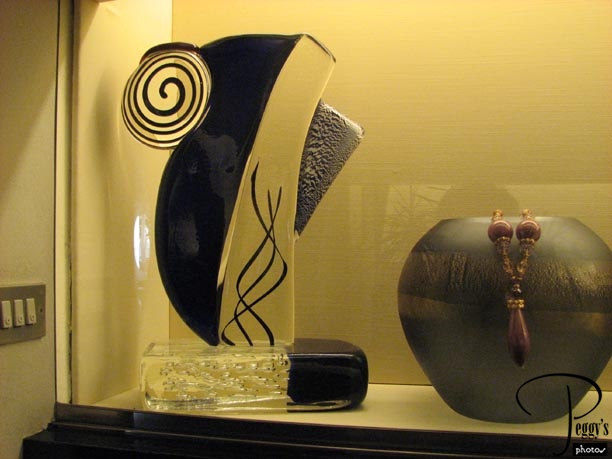
And more.

Westin Excelsior
Westin Excelsior
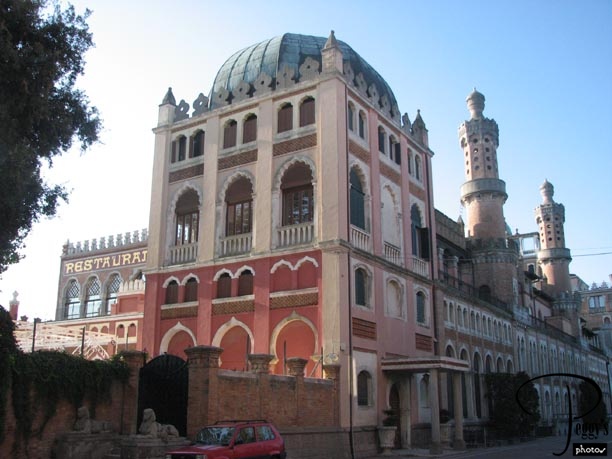
The outside of the hotel’s restaurant. I was walking past it on my way to the bus stop.

Westin Excelsior
Waiting for the Bus on The Lido
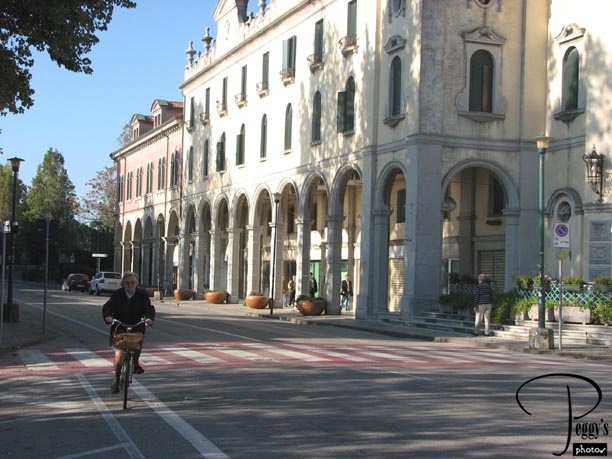
I was waiting on this corner down from the hotel for the bus to take me to The Lido’s main town: Santa Maria Elisabetta. One major form of transportation on the Lido seems to be the bicycle. Many people of all ages passed me riding bikes.

Waiting for the Bus on The Lido
Santa Maria Elisabetta
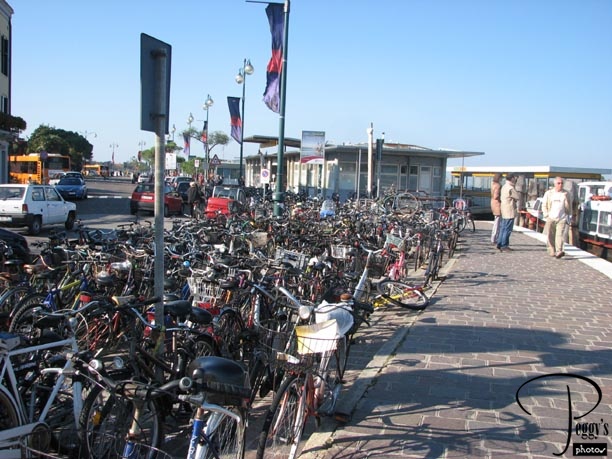
The vaporetto station of Santa Maria Elisabetta. I guess people ride their bikes to get to the vaporetto, but how do they ever find their bikes again in this mess?

Santa Maria Elisabetta
Santa Maria Elisabetta
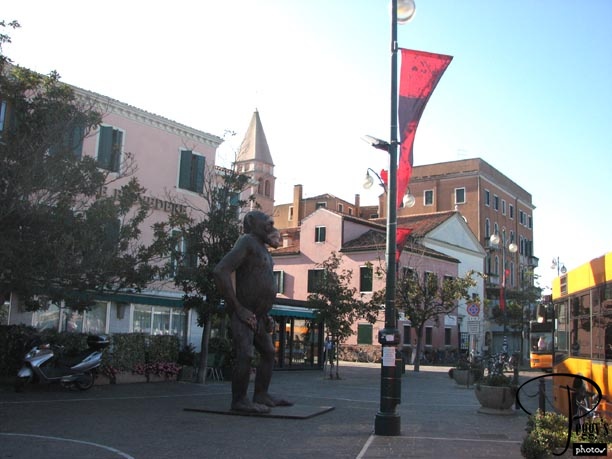
The waterfront facing the vaporetto station with a very interesting statue that, I suppose, is there to greet visitors to The Lido.

Santa Maria Elisabetta
Santa Maria Elisabetta
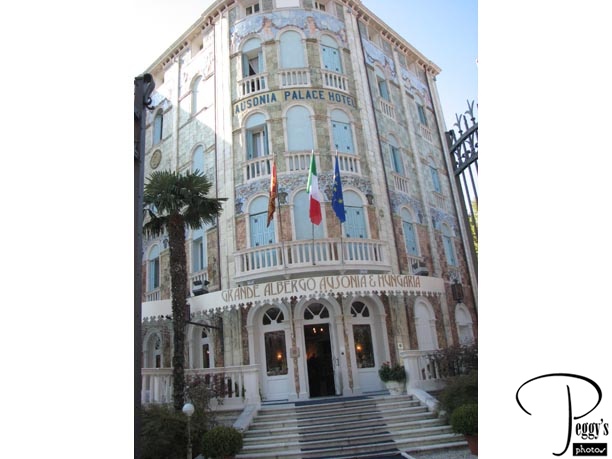
Close–up of the giant primate.

Santa Maria Elisabetta
Santa Maria Elisabetta
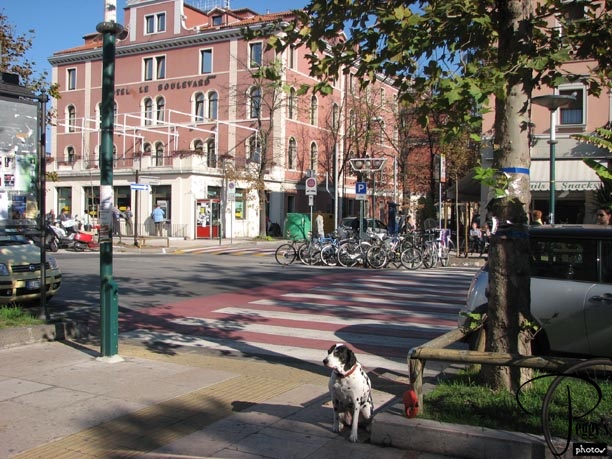
The Gran Viale Santa Maria Elisabetta, the main street.

Santa Maria Elisabetta
Santa Maria Elisabetta
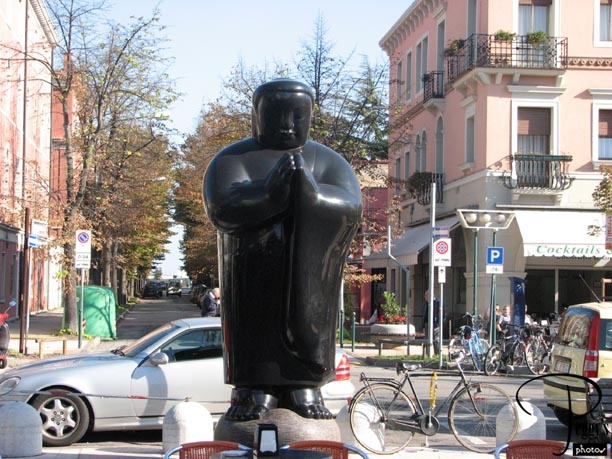
An interesting statue in front of a cafe.

Santa Maria Elisabetta
Santa Maria Elisabetta

Seen on my walk on the Gran Viale: the Grand Albergo Ausonia and Hungaria Hotel. A four–star hotel built in 1905, decorated with a polychromatic majolica covering. Quite interesting.

Santa Maria Elisabetta
Santa Maria Elisabetta
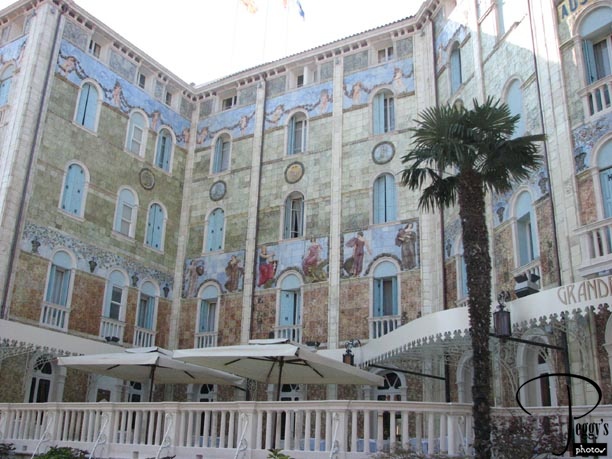
Another view of the Grand Albergo Ausonia and Hungaria Hotel.

Santa Maria Elisabetta
Santa Maria Elisabetta

Close–up of the hotel.

Santa Maria Elisabetta
Santa Maria Elisabetta
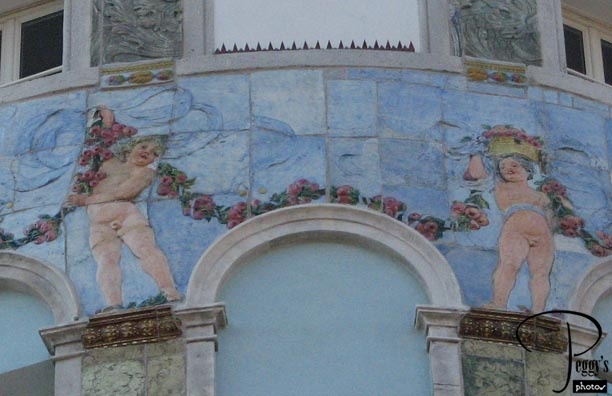
Another close–up.

Santa Maria Elisabetta
Santa Maria Elisabetta
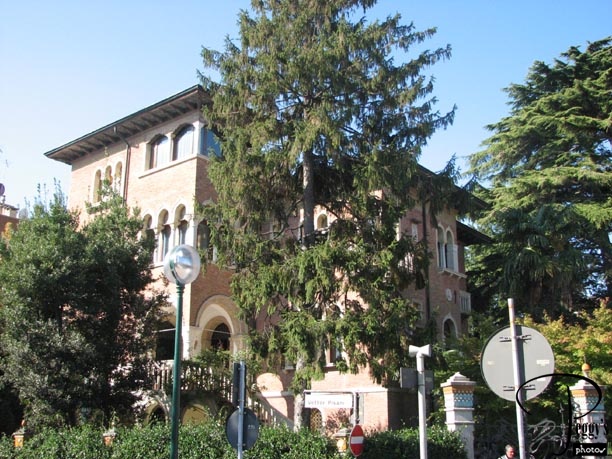
One of the many beautiful villas on The Lido.

Santa Maria Elisabetta
Santa Maria Elisabetta
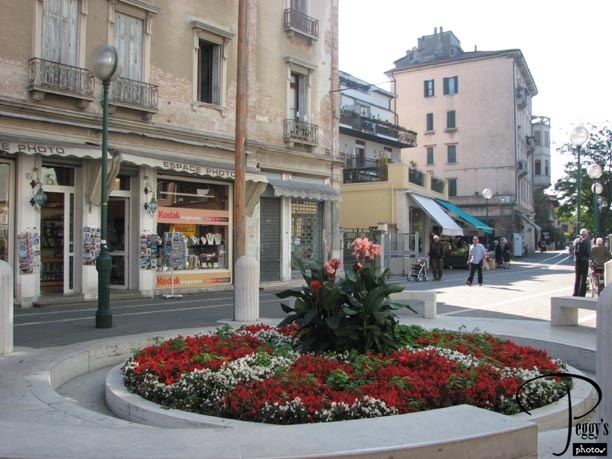
A street off the Gran Viale.

Santa Maria Elisabetta
Santa Maria Elisabetta
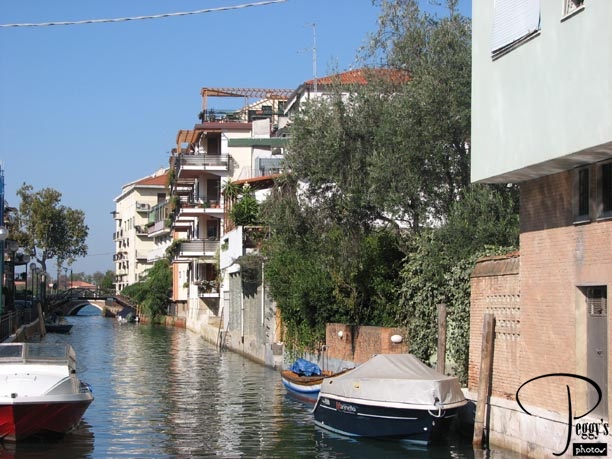
One of The Lido’s canals with modern apartment buildings lining it.

Santa Maria Elisabetta
Santa Maria Elisabetta
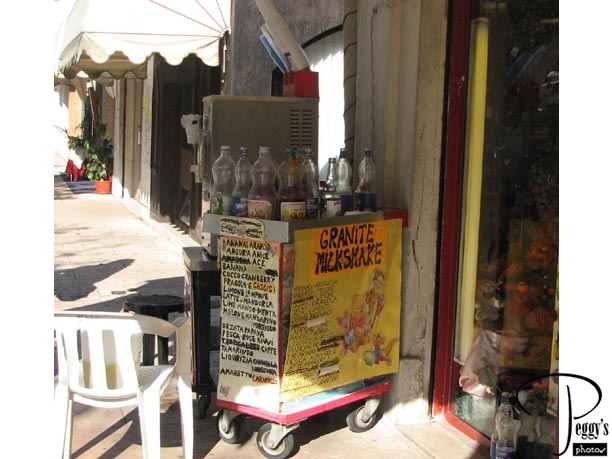
Granite milkshakes here.

Santa Maria Elisabetta
Santa Maria Elisabetta
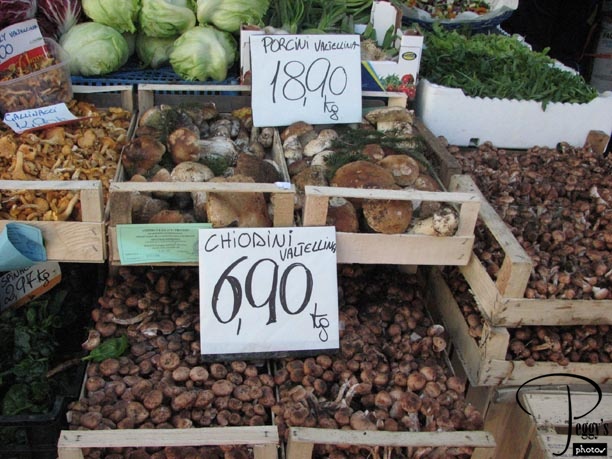
Mushrooms for sale.

Santa Maria Elisabetta
View from Santa Maria Elisabetta
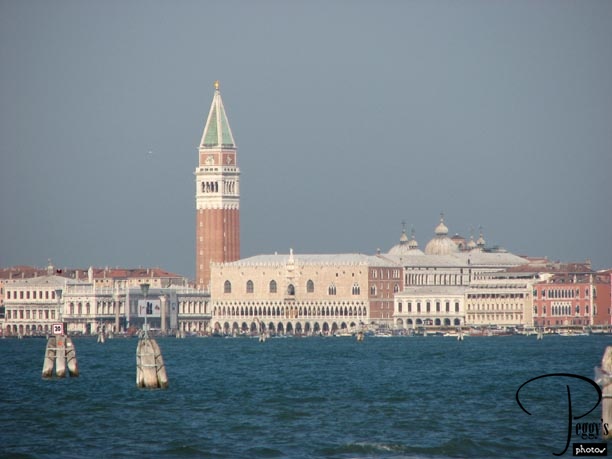
View of Venice Island from the waterfront of Santa Maria Elisabetta using my zoom lens.

View from Santa Maria Elisabetta
Santa Maria Elisabetta
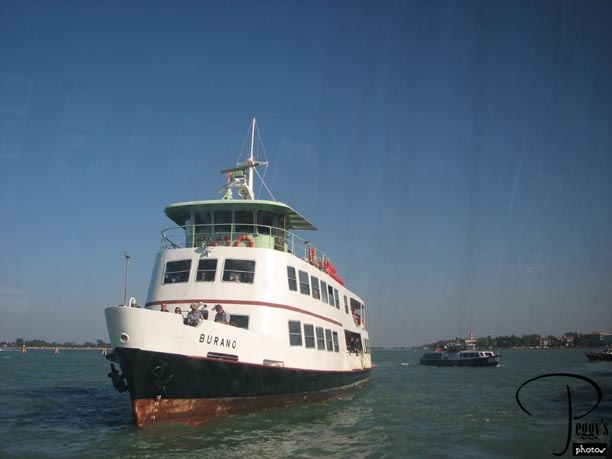
I got tired of walking around the town––there wasn’t much to see in it. My foot felt well enough for me to take the vaporetto to Torcello, an island I had not yet visited. To get there from The Lido, you take a vaporetto first to the island of Burano and then another vaporetto to Torcello. Here is our vaporetto coming into port––it was many sizes larger than the usual vaporetti. We discovered that the “Burano” on the ship did not mean that it would take us all the way to Burano. Rather, it took us to Porto Sabbini and we were told to get off the boat and get on another one––this one was named “Torcello,” which took us to Burano.

Santa Maria Elisabetta
In the Lagoon
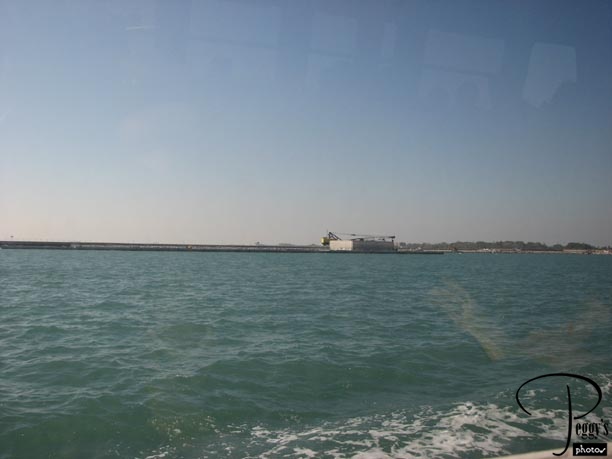
We passed the Venice Tide Barrier Project––the Modulo Sperimentale Electtromeccanica project. It was started in 2001 with no completion date. It is “designed to protect Venice from flooding and erosion using a string of 79 inflatable gates to stem the flow of water through Venice’s three inlets into its lagoon.”

In the Lagoon
Burano
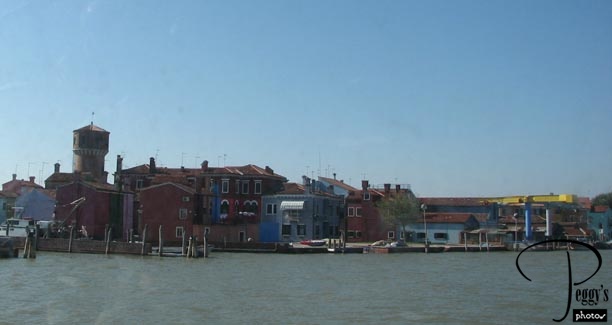
Approaching Burano, where we got off the “Torcello” and got on a much much smaller vaporetto to go to Torcello.

Burano
Torcello
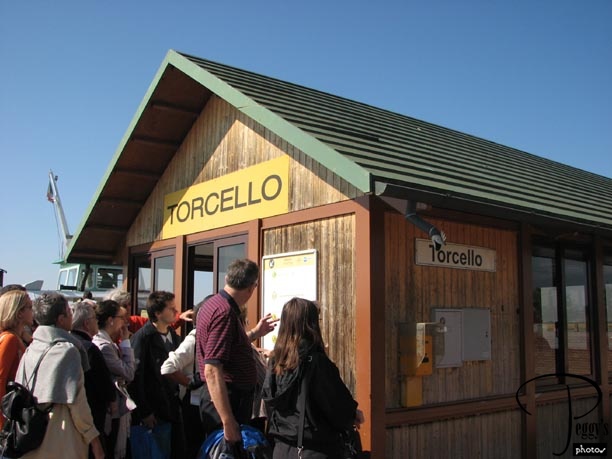
Arriving at Torcello. The people are looking at the vaporetto schedule. Across the top of the schedule are numbers 1 to 24, representing the hours of the entire day. Below those numbers, are numbers such as 05 or 23, which tell you what minute of the hour the vaporetto is coming. Simple system once you decipher it.

Torcello
Torcello
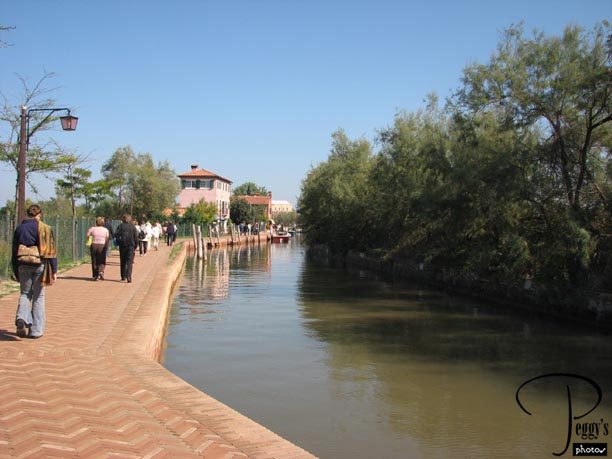
Torcello is the birthplace of Venice, where the first mainland people came between the 5th and 6th centuries to escape the invading barbarians. At one time, it had a population of about 20,000, along with churches and palaces. Then Venice Island became more popular and Torcello lost most of its residents. Today, there are only about 20–60 people living on Torcello. Most of the island is scrubland. You come here to see its church. Photo: Part of the about 10–minute walk to the church.

Torcello
Torcello
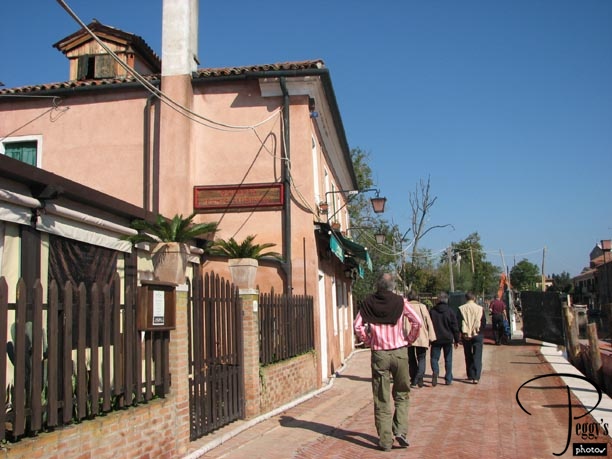
Farther along on the pathway.

Torcello
Torcello
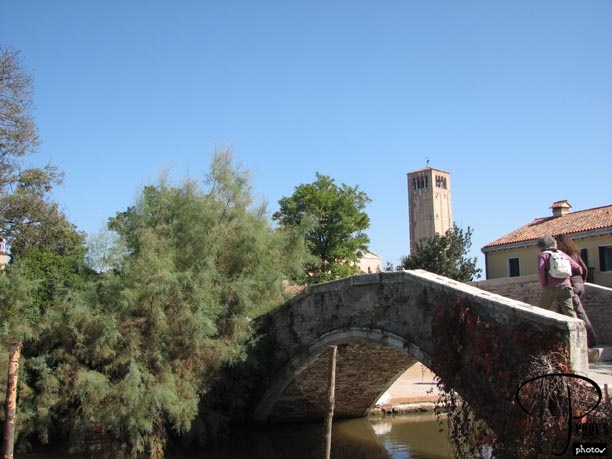
The only bridge that I had to cross.

Torcello
House of Madame Sun Yat-sen
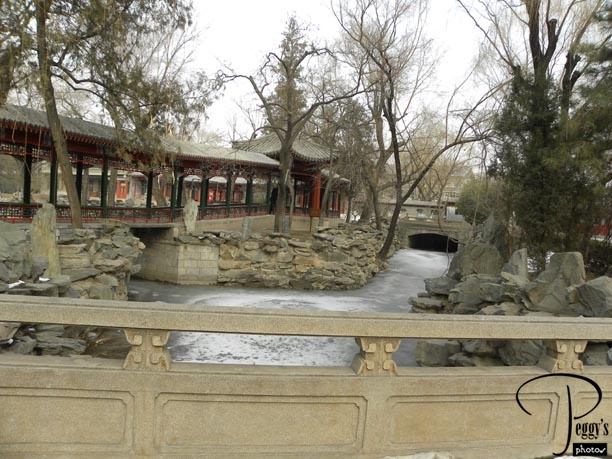
Madame Sun Yat–sen left China to live in Russia when the Communists were thrown out of the KNT (the Kuomingtang National Pary) that her husband had founded and which Chiang Kai–shek had taken over. She returned to China by invitation of Mao and Zhou Enlai, the Communist leaders, in 1949. She was given this house to live in. She is still a hero in China as well as is Mao. Photo: the corridors on the property.

House of Madame Sun Yat-sen
Torcello
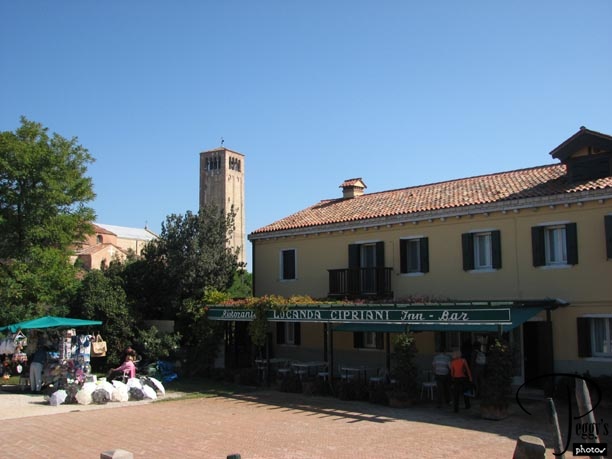
Farther along with a view of the church’s bell tower.

Torcello
Torcello
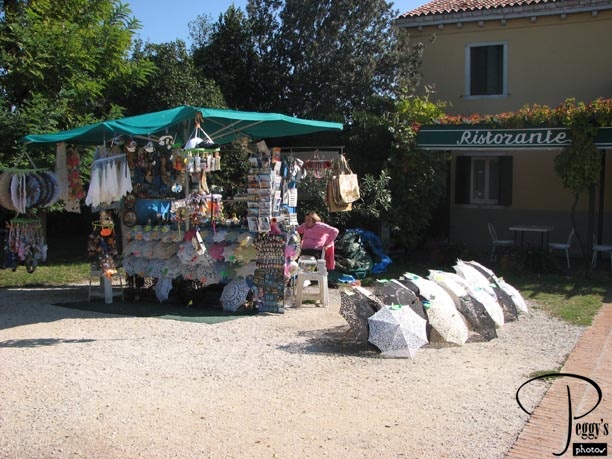
Always a souvenir vendor.

Torcello
Torcello

Close–up of some of the items for sale.

Torcello
Torcello
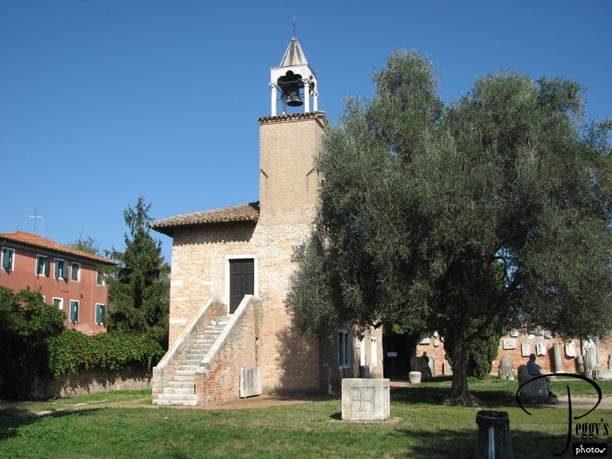
Part of the Museo dell’Estario having archaelogical treasures of Torcello. The museum was closed today.

Torcello
Torcello
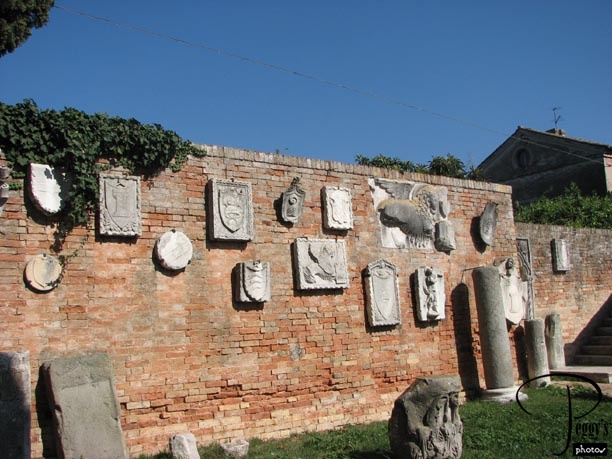
Archaelogical fragments along a wall.

Torcello
Torcello
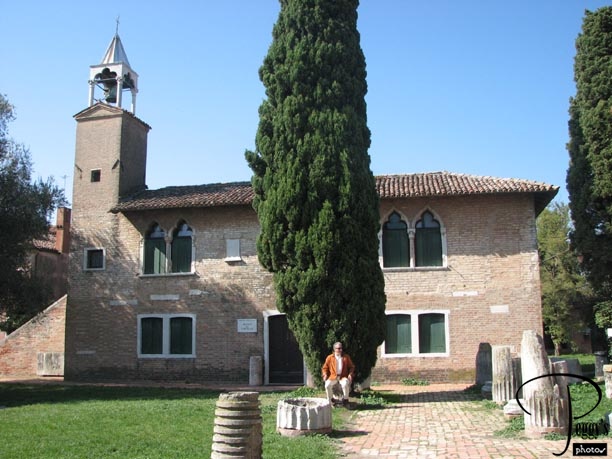
View of the other side of the museum.

Torcello
Torcello
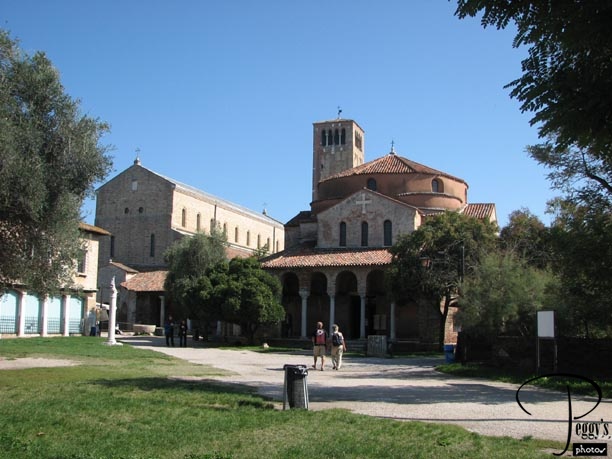
The Church of Santa Fosca, built between the 11th and 12th centuries, claimed to be the oldest church in Venice.

Torcello
Torcello
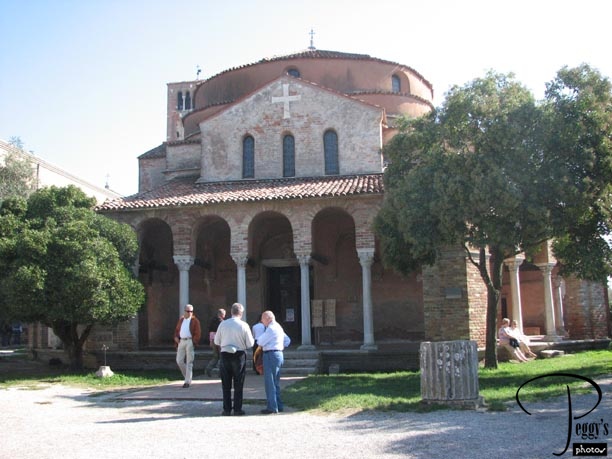
A closer–up view of the Church of Santa Fosca.

Torcello
Torcello
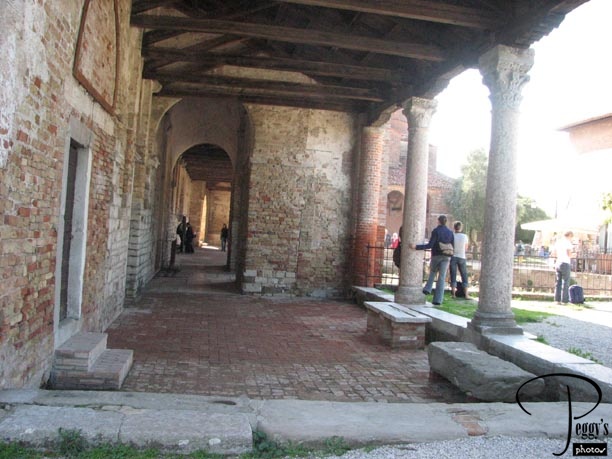
Its portico.

Torcello
Torcello
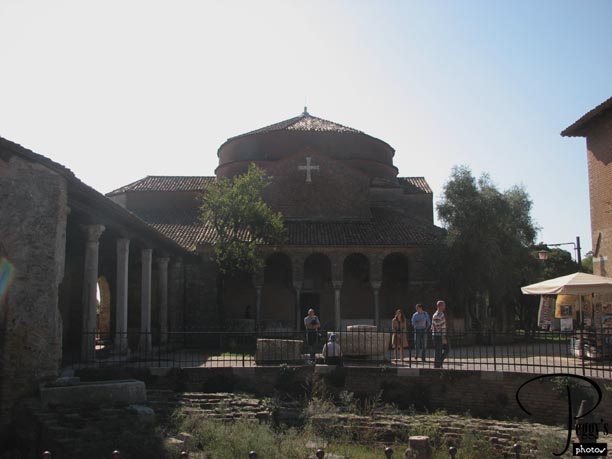
The other side of the Church of Santa Fosca. The sun interferred with my taking a good photo.

Torcello
Torcello
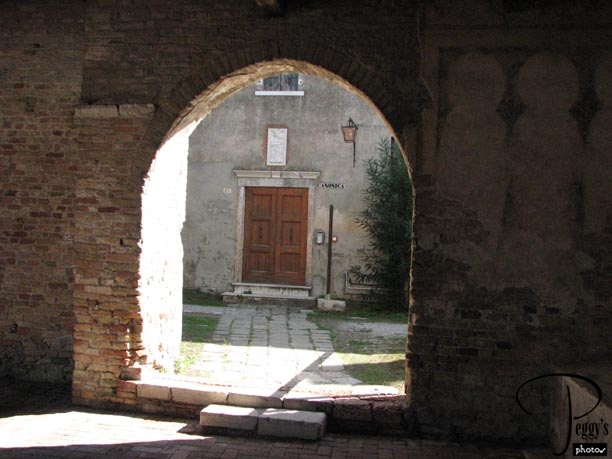
View through one of the arches.

Torcello
Torcello
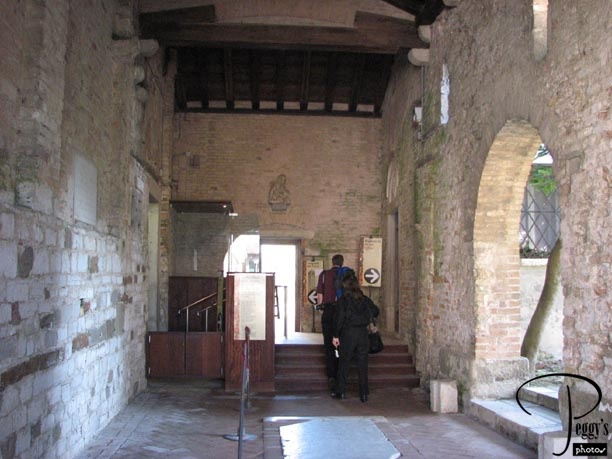
Between the church on the right (the building with the round dome) and the basilica on the left (the rectangle). You couldn’t visit the church part except to go into the gift shop.

Torcello
Torcello
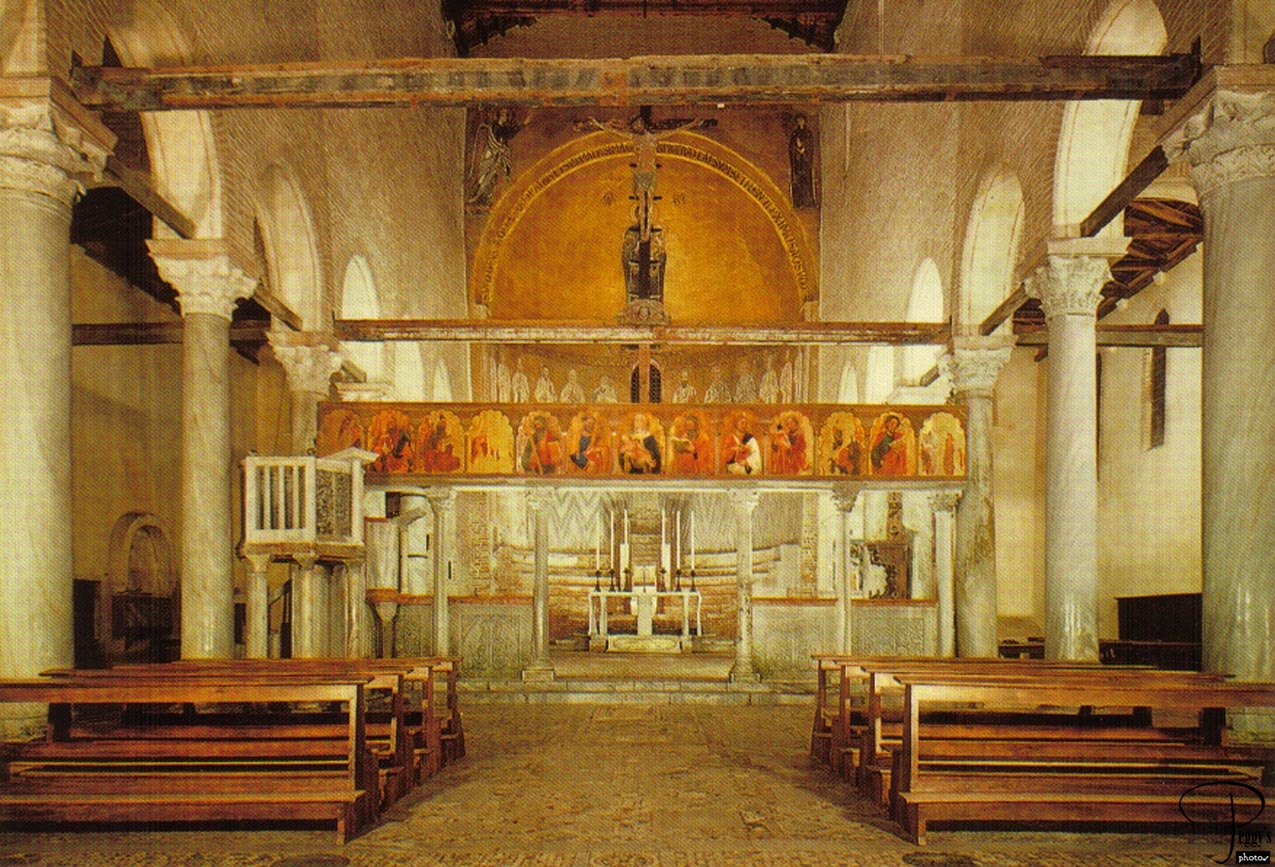
You needed to pay a small fee to enter the basilica and no photos were allowed inside it, so I bought postcards of it. However, this was disappointing as you don’t get the feeling of the age of the basilica through the postcards and this feeling was one of the reasons that it is so interesting. The walls where the mosaics are located are in disrepair and so is most of the basilica. It reminded me somewhat of some of the California missions. Anyway, here is a postcard of the interior. The marble pulpit in the left center of the photo is made up of fragments from the first church here in the 7th century

Torcello
Torcello
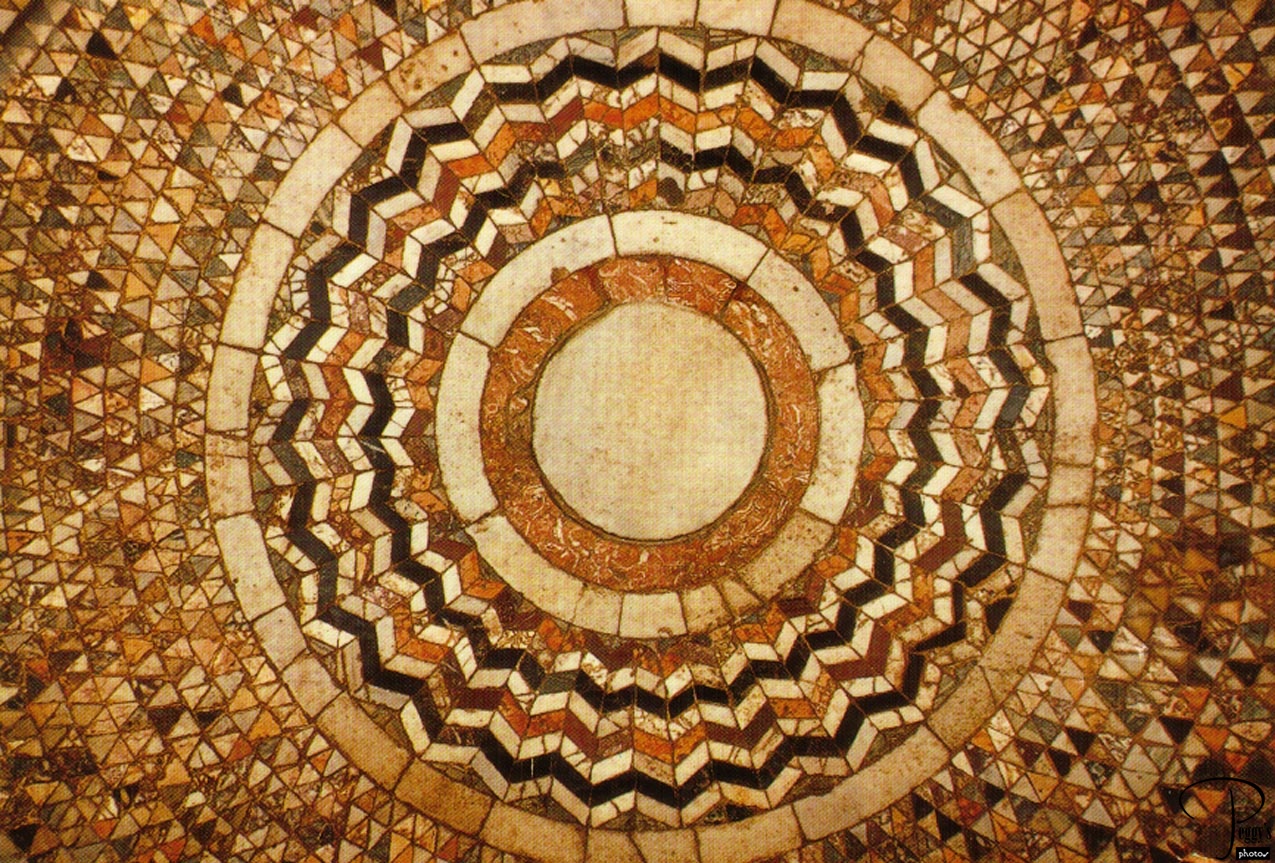
Part of the mosaic floor.

Torcello
Torcello
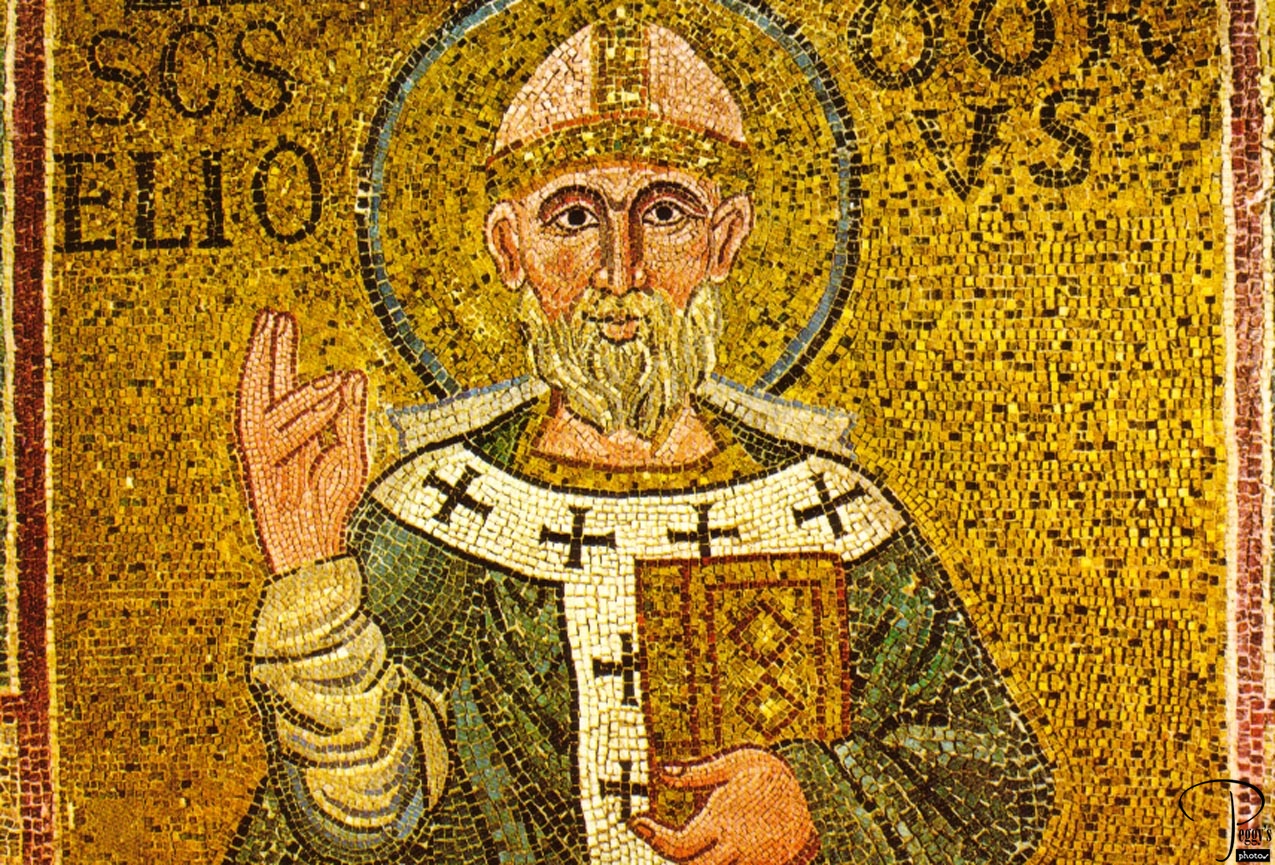
A Byzantine mosaic on the wall.

Torcello
Torcello
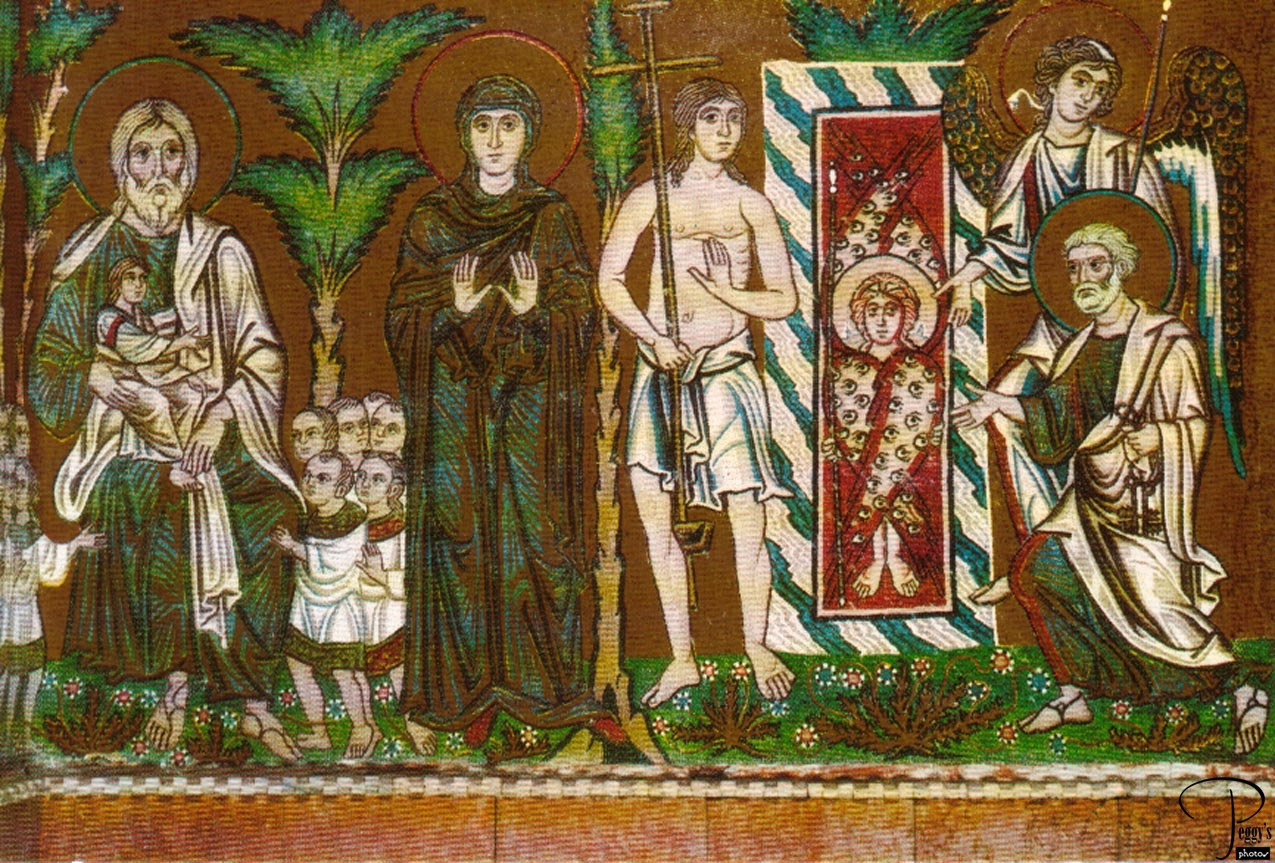
Another mosaic.

Torcello
Torcello
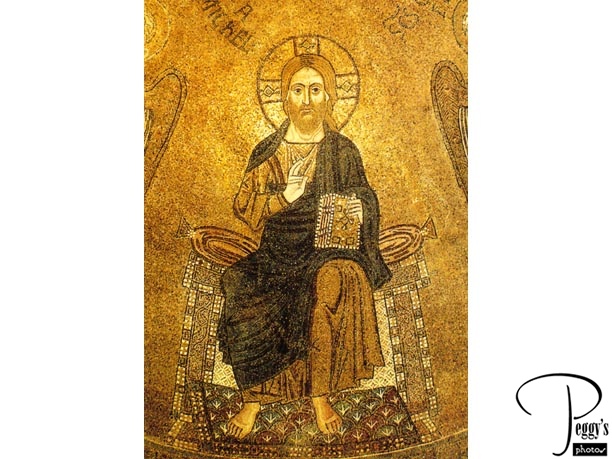
One more mosaic.

Torcello
Torcello
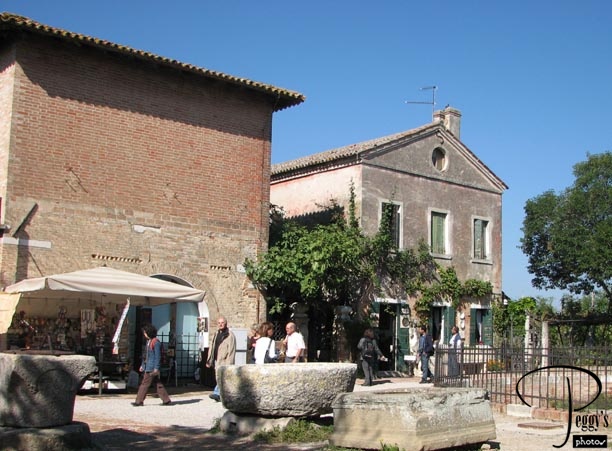
The courtyard in front of the church. The building on the right houses a store.

Torcello
Torcello
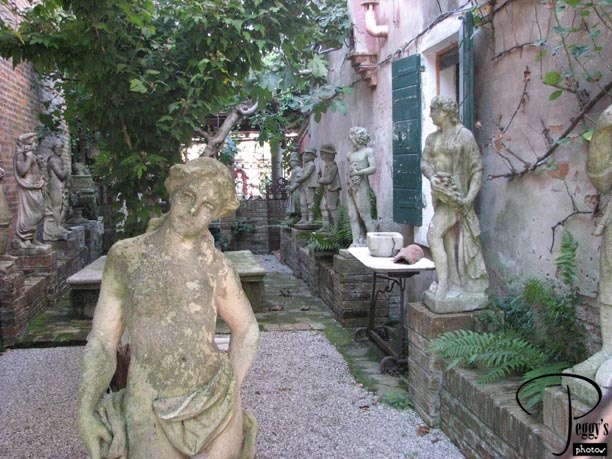
A sculpture alley on the side of the store.

Torcello
Torcello
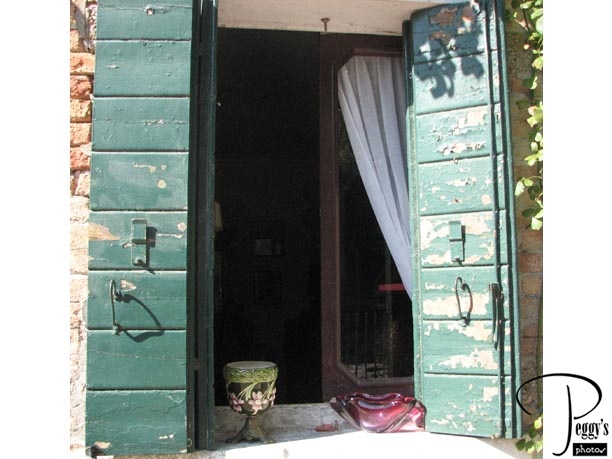
A window of the store.

Torcello
Torcello
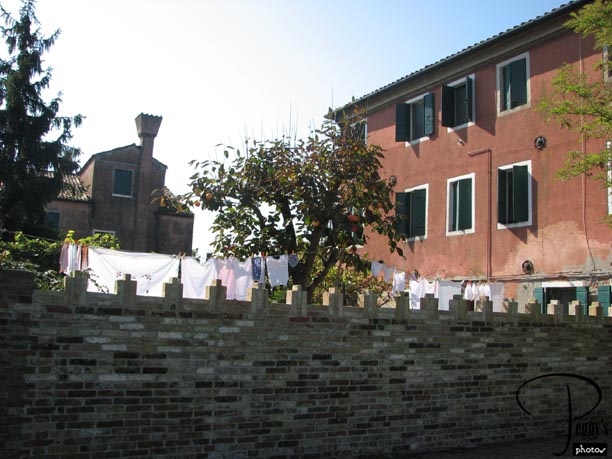
Two buildings, a wall, a row of laundry, and a fruit tree.

Torcello
Torcello
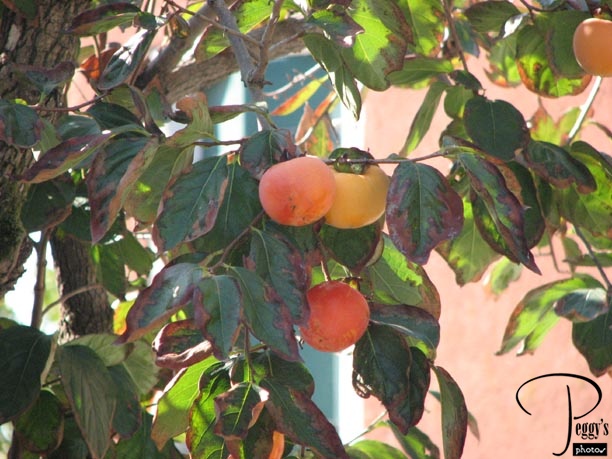
Close–up of the fruit tree.

Torcello
Torcello
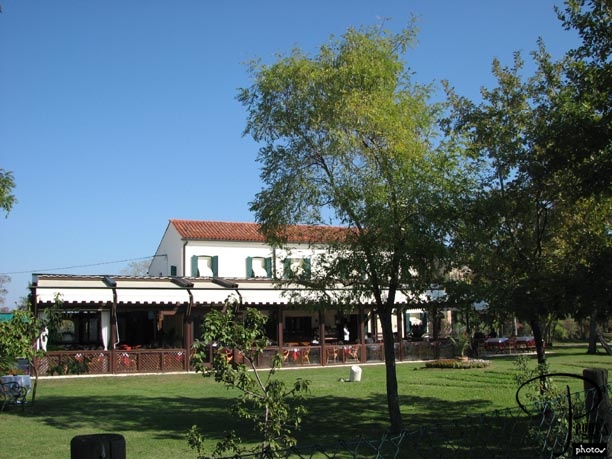
The restaurant on Torcello where I had lunch.

Torcello
Torcello
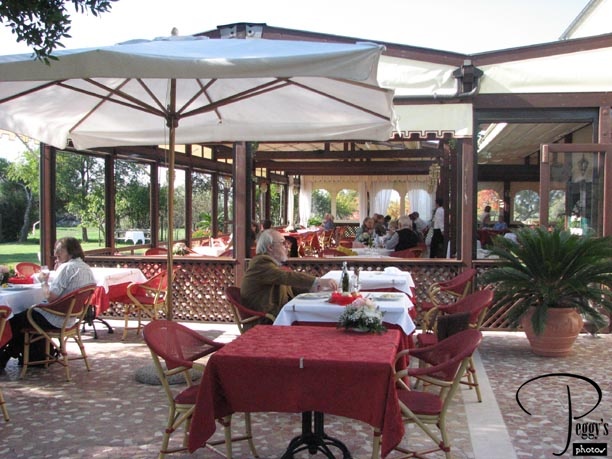
The patio of the restaurant. I decided to have a second course rather than my usual pasta first course. I had veal marsala and it wasn’t very good.

Torcello
Torcello
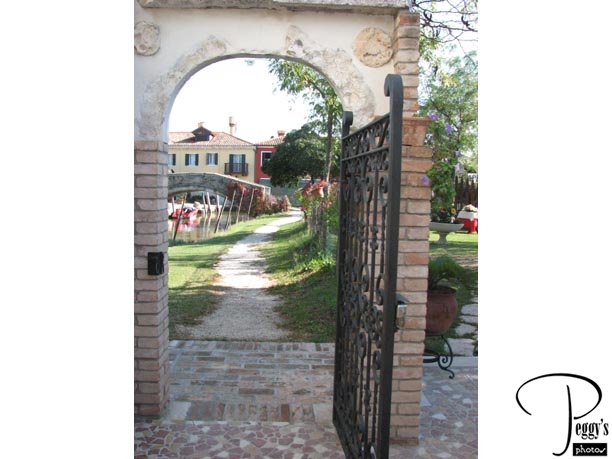
View from the restaurant’s patio.

Torcello
Torcello
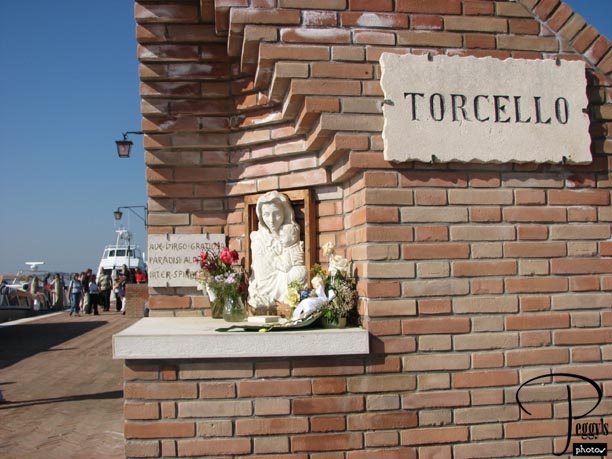
Back to the vaporetto station to take the vaporetto back to Burano. It is only about a 5–minute trip.

Torcello
Burano
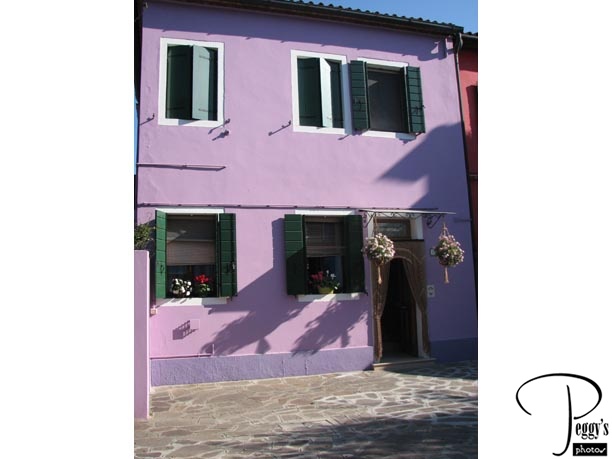
Since the vaporetto took me back to Burano, I decided to walk around the island and, of course, take more photos of it––the island really is irresistable for anyone with a camera––even though I have already put a slide show of Burano on this site: Go to Slide Shows, Western Europe, Italy–1, “Burano.” One of the photos that I took.

Burano
Burano

Unbelievable colors.

Burano
Burano
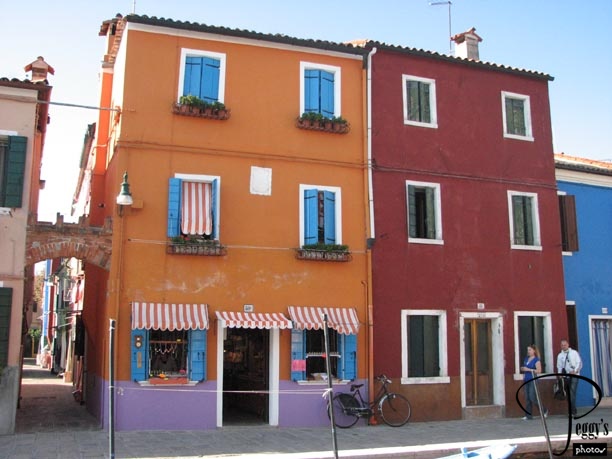
Contrasting colors.

Burano
Burano
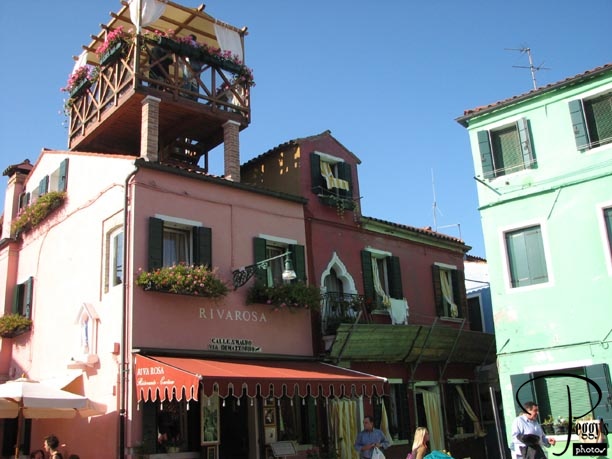
There are probably some tables to eat at way up on the top.

Burano
Burano

Pretty umbrellas.

Burano
Burano
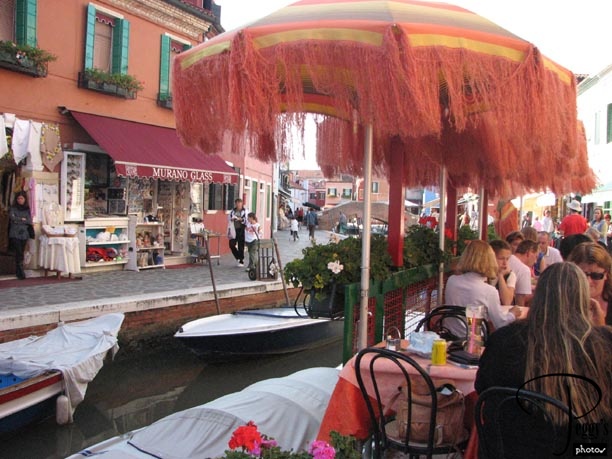
The umbrellas from the other side of the canal.

Burano
Burano
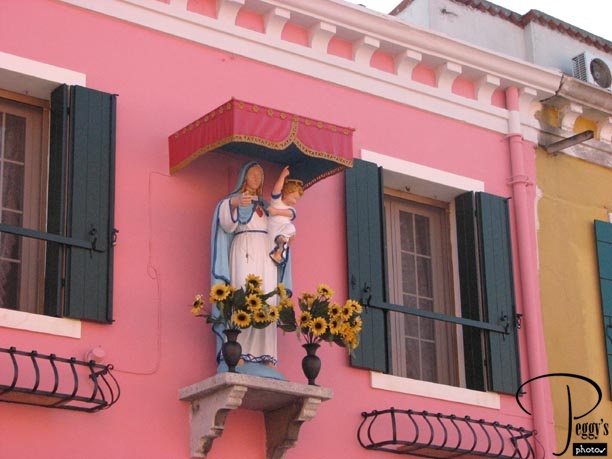
I had taken a photo of this statue and house in 2005 but I knew something was different about it. I looked at my original photo––the difference was the color of the building and of the awning. Also, the flowers in the vases had been changed. I thought that the tour conductor on my Italy trip of 2005 had told us that the colors on the buildings couldn’t be changed, so I looked for info on this. What I found out: “The colors of the houses follow a specific system originating from the golden age of its development. If someone wishes to paint their home, one must send a request to the government, who will respond by making notice of the certain colors permitted for that lot.”

Burano
Burano
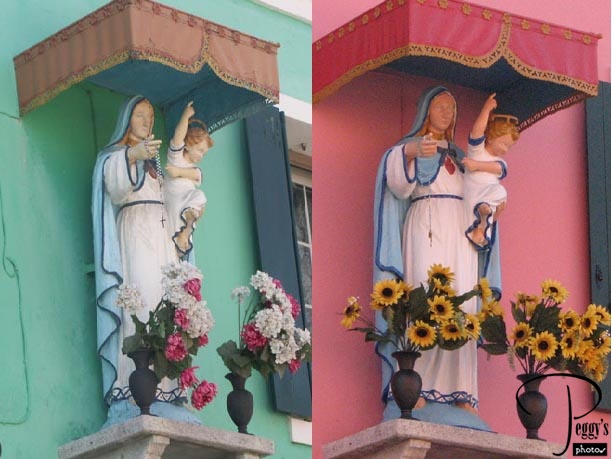
On the left: the photo I took in 2005. On the right: the photo I took on this trip, 2007.

Burano
Burano
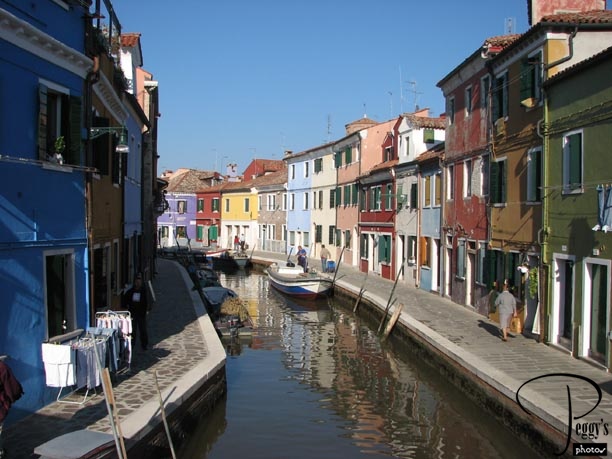
One of the canals.

Burano
Burano
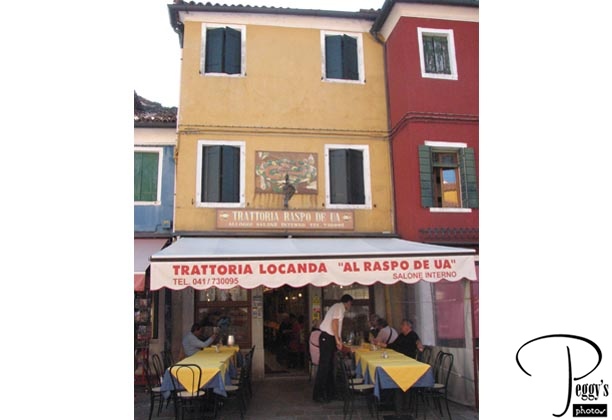
A cafe.

Burano
Burano
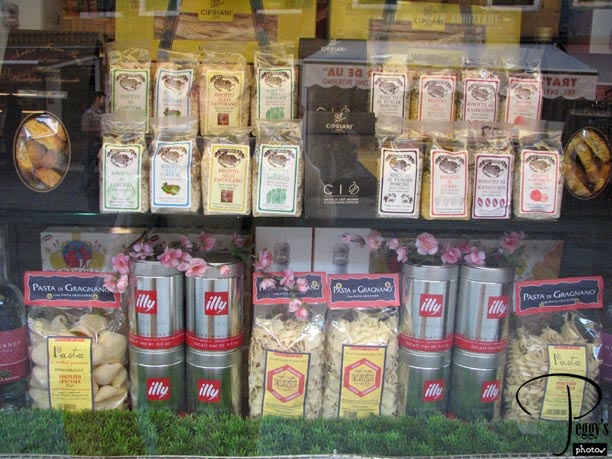
Risotto and pasta for sale.

Burano
Burano
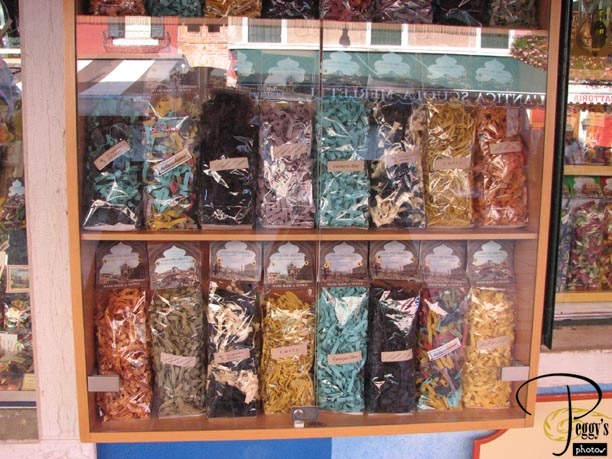
Pasta in many colors.

Burano
Burano
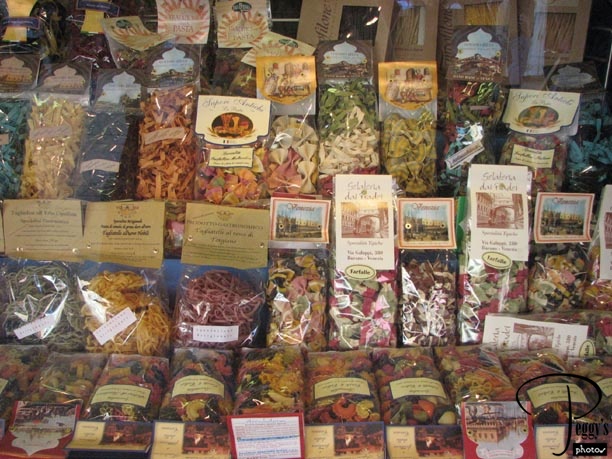
Multicolored pasta.

Burano
Burano
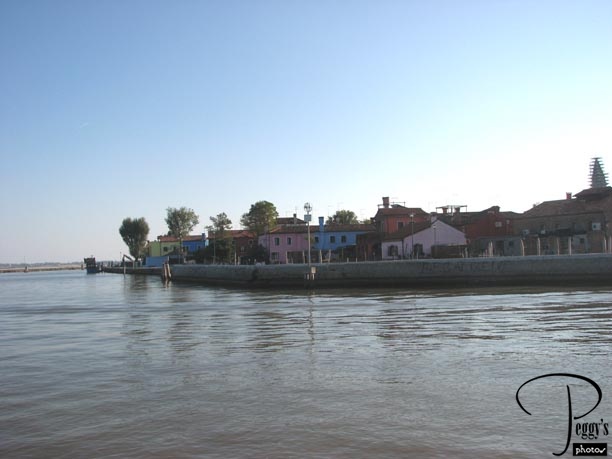
Sailing away from Burano to The Lido. This time the “Torcello” took us all the way to The Lido. It made one stop but we didn’t have to change vaporetti. I had dinner in the lounge of the Westin and then packed for what I thought would be my trip home the next day.

Burano
Stuck in Venice
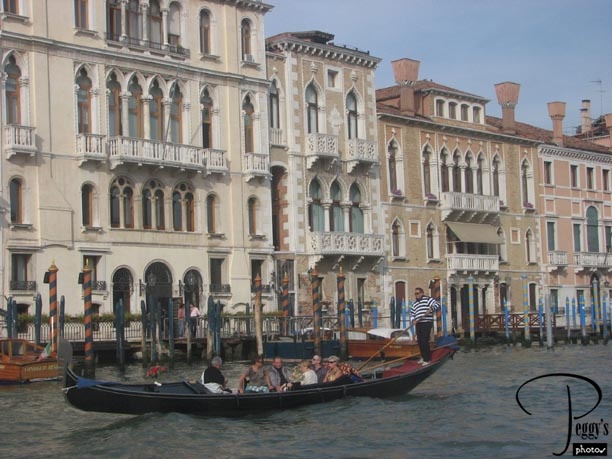
Day 13. I shared a water taxi from the Westin Excelsior at 8 a.m. that took us to the Marco Polo Airport via the canals of Murano. I had help getting into the water taxi and two porters at the airport helped me out. I had a wonderful time in Venice, but I was also very happy not to have to go on any more boats or to go over any more bridges. I was supposed to fly from Venice to Munich to London to Washington, DC, to Los Angeles. I checked in two bags at the ticket counter, went through security, and checked the board for any delays on my flight to Munich. The plane was already delayed for takeoff; then, it got worse and I knew that I would not make my connection to London from Munich. I went to the Lufthansa ticket counter and asked to be reticketed. They really tried, but they couldn’t find any way to get me across the Atlantic that day. So Lufthansa put me up for free at a hotel on the mainland in Mestre (I am sure that the Laguna Palace, my hotel for the night was the same hotel that my 2005 Italy tour stayed at). They also paid for three meals, a taxi to the hotel, a taxi back to the airport the next day, and a free telephone call to the U.S. (I had an European cell phone with me which became useless as the company had lost its third–party provider while I was in Italy). They booked me for tomorrow from Venice to Munich, then directly to LA. Well another day in Venice and a much better flight home––I felt pretty good. I asked the hotel how to get to Venice Island. They directed me to a bus stop and told me that there was a tobacco store open on my way to the stop where I could buy a bus ticket. It was a long walk to the bus stop and the tobacco store wasn’t open, nor was any other place where I could buy a bus ticket. The bus driver wouldn’t let me on the bus without a ticket. So I went into a bar/restaurant and asked them to call me a taxi, then I took a very expensive taxi ride into Venice. It dropped me off at Piazzale Roma and I felt very good that I knew where I was. I got on the no. 1 vaporetto (in the right direction) and I was again on the Grand Canal.

Stuck in Venice
Stuck in Venice
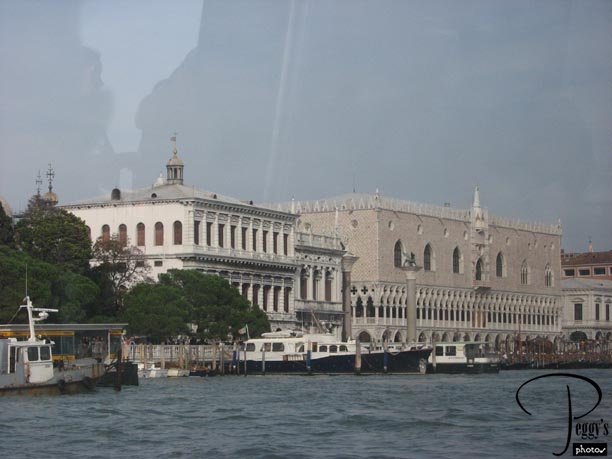
I got off at one of the San Marco stations as I didn’t want to have to walk over the bridges in front of the Palazzo Ducale. This put me behind the Piazza San Marco, where I started my walk around Venice. I didn’t have a set route, just walked around and figured that eventually I would know where I was. I have put the photos that I took on my walk on a slide show on this site: Go to Slide Shows, Western Europe, Italy–2, “Walk from San Marco to the Grand Canal.” The photos will show you what you will see on such a walk––alleys, canals, campos, churches, store windows, etc. I had to backtrack several times to avoid risky bridges or alleys where there weren’t any tourists, but I really enjoyed this walk.

Stuck in Venice
Stuck in Venice
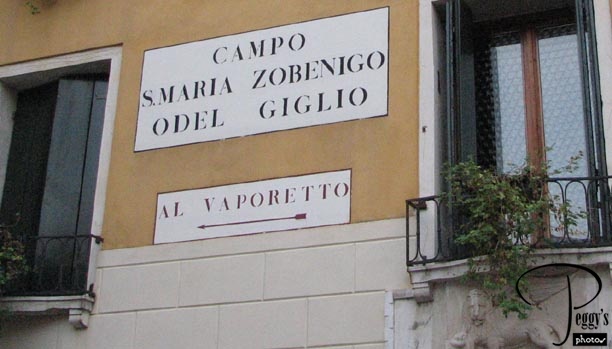
After about 2 1/2 hours of walking, I saw a sign directing me to a vaporetto.

Stuck in Venice
Stuck in Venice
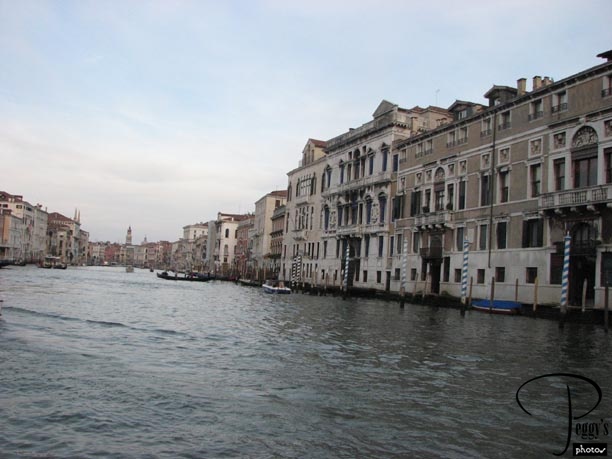
When I got to the vaporetto station, I found myself back at the Grand Canal. I was also surprised at how small a section of Venice I had walked through in that 2 1/2 hours. I took the no. 1 back to Piazzale Roma and a taxi back to the hotel. I had a free dinner––I could choose anything on the menu compliments of Lufthansa. Then it was time to pack again, which I had to do by the room’s security light as all the hotel’s lights went out. By the time they went back on, I was already packed. The taxi picked me up at 4:30 a.m. for my 6:40 a.m. flight from Venice to Munich. Again, I checked in my two bags and went through security and checked the board to see if my plane was on time. It wasn’t going to be: first 20 minutes delayed, then an hour. I still had time for my connection. At 7:40 a.m., we left the terminal to get on a bus that would take us to our plane. We waited for 10 minutes on the bus and then were told to go back into the terminal. Munich airport was closed because of fog, but we would definitely be leaving in an hour. I still had time to make my connection. At 8:40 a.m., we got back on the bus, waited 10 minutes, but this time the bus took us to our plane––a very small plane. We all got on and were welcomed by the pilot who told us that we would be sitting on the plane for an hour and a half waiting for the fog to lift enough for our plane to be able to land in Munich––as our plane was so small, we needed greater clearance than the larger planes need. He wanted us on the plane so that we could take off immediately as soon as the fog lifted. Finally, we left Venice and landed in Munich 4 1/2 hours late. My plane to LA had already left and I was told to go to Lufthansa’s Service Center. There were at least 200 people ahead of me on the line for reticketing. After 2 hours I made it to the front of the line and was told that there was a plane leaving in 30 minutes for New York. Did I want to go to New York?––I did. I got reticketed, got through immigration and security very quickly––everyone was still on the Service Center lines––and ran to the gate. I made it in time and a seatmate let me use his cell phone so I could call home with my new arrival time. At JFK, I went through immigation and then had to wait for all the luggage to be off the plane as one of my suitcases was missing. I went through customs and then had to find out if I could report the missing suitcase in LA (I could), couldn’t find a sign as to how to get to the American Airlines terminal for my flight to LA, finally found an elevator to take me to the train to the terminal, found the elevator at the terminal and got off at the wrong floor, got back on the elevator, found a ticket agent to recheck my one bag and to give me a boarding pass, who told me I had to really hurry to the gate as they probably were already loading the plane, went through security and, of course, this was the time that the computer decided that I needed an extra security check, passed the extra security check (a pat down and a handbag check––here, I almost lost it, but was able to get a hold of myself and carry–on), and ran to the gate after having to go on two very steep escalators. My plane was just starting boarding. I arrived at LAX at 12 midnight. My second suitcase arrived in LA five days later. I don’t think that I will ever have so much “excitement” trying to get home from Europe again. I now had one day to get ready for my trip to New Mexico to see the Balloon Fiesta.
